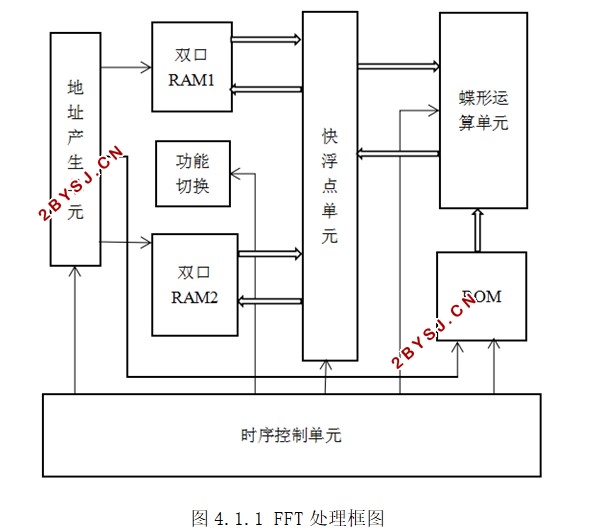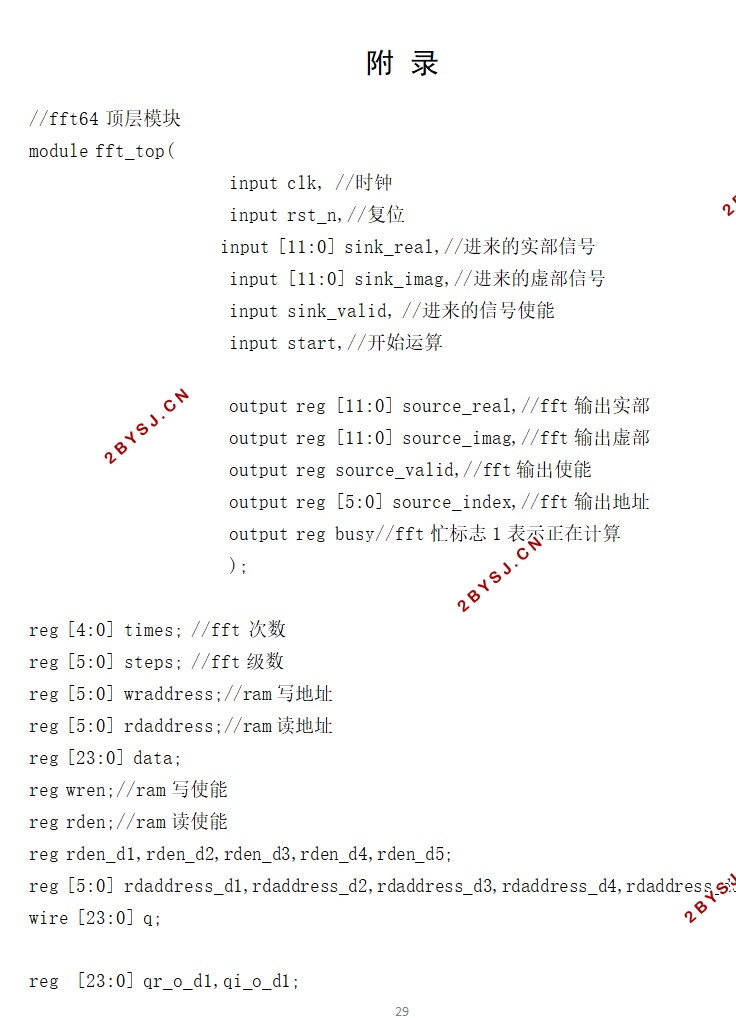快速傅里叶变换算法分析
无需注册登录,支付后按照提示操作即可获取该资料.
快速傅里叶变换算法分析(任务书,开题报告,论文12000字)
摘 要
随着科学技术的发展,关于数字信号处理的技术与方法被广泛运用在了各个行业领域。因此,DFT作为其中的一种基本的运算方法,有着很重要的作用。而FFT算法的发现,让离散傅氏变换的运算量减少了许多,这使得实现数字信号处理变得更加容易。FFT已经成为了当代数字信号处理的核心技术之一,因此对FFT算法的不断研究分析具有很重要的意义。
文章里借用现场可编程门列阵FPGA来实现了快速傅里叶变换FFT处理器,包括算法的考中、算法的验证、体系的结构设计、各个模块的设计、FPGA的实现和尝试。设计拔取基2按时间抽取算法,以Quartus II为仿真平台,以Verilog HDL语言实现了仿真。
对论文主要研究了如何利用FPGA来实现基2快速傅里叶变换处理器,并对仿真结果错出了分析。
研究结果表明:其计算的结果达到了一定精度,运算的速度可以满足一般的信号处理的要求。
本文的特色:在本文中,利用了近几年来发展迅速的新型可编程器件FPGA,证实了FFT的作用,使DFT的运算速度提高了许多。
关键词:FFT;FPGA;Quartus II;Verilog HDL
Abstract
With the development of science and technology, on the digital signal processing technology and methods are widely used in various industries. Therefore, DFT as one of the basic computing methods, has a very important role. The discovery of the FFT algorithm reduces the computational complexity of the discrete Fourier transform, which makes it easier to implement digital signal processing. FFT has become one of the core technologies of contemporary digital signal processing, so it is very important to analyze the continuous analysis of FFT algorithm.
This paper realizes the fast Fourier transform (FFT) processor with field programmable gate array (FPGA), including algorithm selection, algorithm verification, system structure design, design of each module, FPGA implementation and testing. The design is based on time extraction algorithm, Quartus II as the simulation platform, Verilog HDL language to achieve the simulation.
The paper mainly studies how to use FPGA to implement the base 2 fast Fourier transform processor, and the simulation results are misaligned.
The results indicate that the calculated results reach a certain accuracy, and the speed of the operation can meet the requirements of general signal processing.
In this paper, the use of recent years, the rapid development of new programmable device FPGA, confirmed the role of FFT, DFT operation speed increased a lot.
Key Words:FFT;FPGA;Quartus II;Verilog HDL


目 录
第1章 绪论 1
1.1 研究背景及意义 1
1.2 国内外研究现状 1
1.3 本文研究内容 2
第2章 系统设计方案 3
2.1 开发系统选择 3
2.2 硬件描述语言选择 3
第3章 FFT算法原理及硬件结构 4
3.1离散傅里叶变换 4
3.2快速傅里叶变换 4
3.4 FFT的硬件处理系统的优化 10
3.4.1 提高FFT运算速度方法 10
3.4.2 减少硬件消耗的方法 10
第4章 FFT处理器的FPGA设计与实现 11
4.1 FFT处理器总体设计 11
4.2 蝶形运算单元设计 12
4.3 地址产生单元设计 14
4.3.1 蝶形运算数据地址 14
4.3.2 减少读取操作的方法 19
4.4 时序控制单元设计 19
4.5 64点FFT系统实现 20
第5章 设计方案总结 22
5.1 FPGA仿真验证 22
5.2 测试结果及分析 22
结束语 25
参考文献 26
致 谢 28
附 录 29
